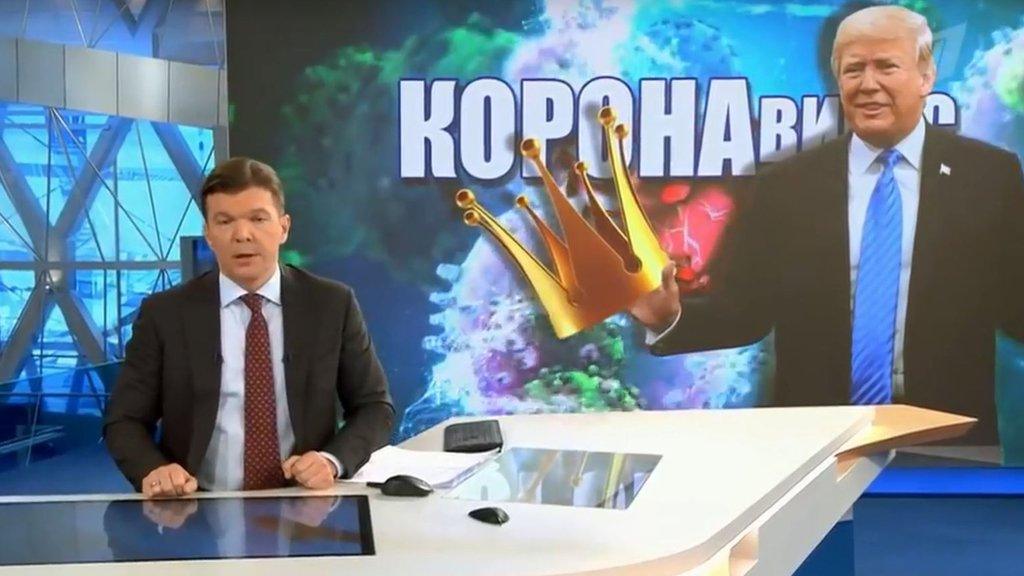Coronavirus: China's Xi visits hospital in rare appearance amid health crisis
- Published
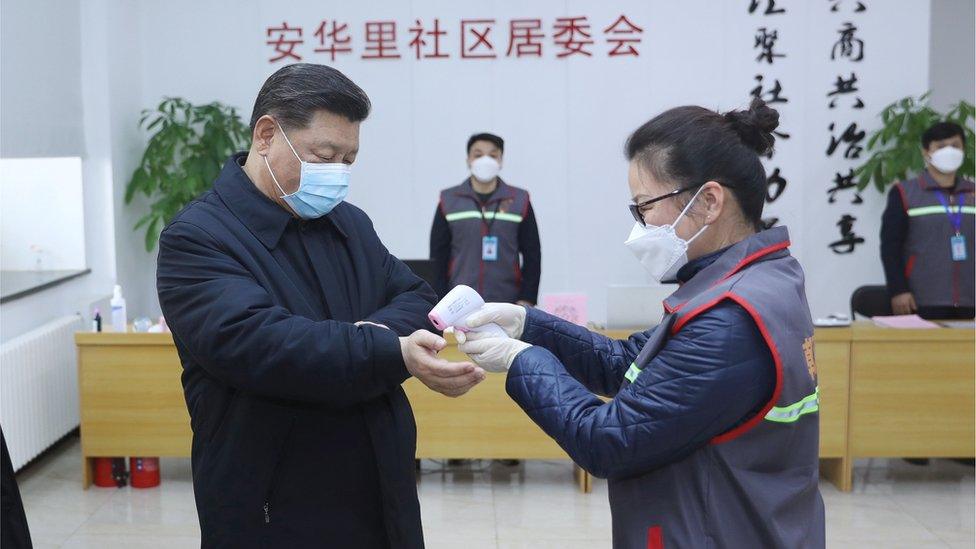
China's president has kept a low profile since the outbreak began
China's President Xi Jinping has visited health staff in Beijing treating patients infected with the new coronavirus, in a rare public appearance amid the outbreak.
Wearing a face mask, Mr Xi also visited a community health centre, where he had his temperature checked.
More than 900 people have been killed by the virus, the gravest public health crisis in China since Sars in 2002-3.
During his visit, Mr Xi urged "more decisive measures" to combat the virus.
The Chinese leader has kept a low profile over weeks as the outbreak has worsened. He is yet to visit Wuhan, where the virus first emerged.
The death last week of a doctor in the city who tried to warn colleagues about the virus, but was targeted by authorities, sparked an outpouring of grief and anger on social media, much of it directed against Mr Xi's government.
"We want freedom of speech" was among the hashtags that trended but were quickly censored.
China's leadership had already faced accusations of downplaying the severity of the virus - and initially trying to keep it secret.
The government has admitted some "shortcomings and deficiencies" in its response but the World Health Organization (WHO) has praised its efforts to control the virus, including quarantines on a massive scale.
On Monday a WHO expert team arrived in China to investigate the outbreak following nearly two weeks of negotiations with Beijing. The organisation now says the fatality rate for the virus appears to be about 2%.
What did Xi do?
The Chinese leader on Monday visited Ditan hospital in Beijing, where coronavirus patients are being treated. He also took part in a video chat with medical workers in Wuhan.
Images carried by state media showed Mr Xi wearing a mask and having his temperature checked. He was also pictured chatting to people clutching grocery bags and wearing masks outside a community centre, joking that they should probably not shake hands at this "special time".
"We must have confidence that we will eventually win this battle against the epidemic," he was quoted as telling hospital workers.
The virus has tested China's ruling Communist Party - which Mr Xi leads - and its authoritarian political system, where local officials are often afraid to speak out about problems for fear of upsetting their party superiors.
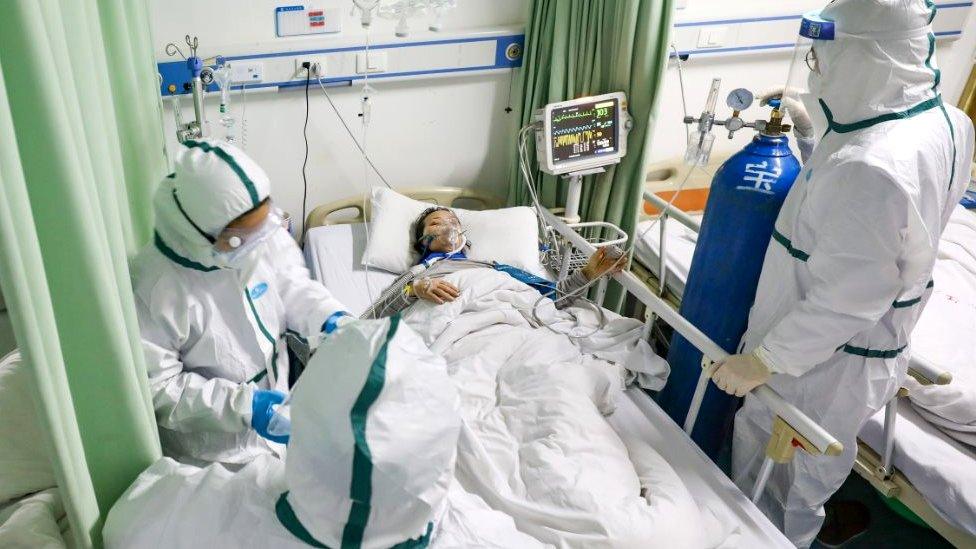
Despite the death toll, an increasing number of patients are recovering
Mr Xi has himself called the outbreak "a major test of China's system and capacity for governance".
His appearances at the hospital, as well as a centre for disease control and the community centre on Monday are being seen as an effort to cast him at the centre of the government response.
Officially, Premier Li Keqiang is leading the working group handling the virus. Mr Li has visited Wuhan.

What are the symptoms of coronavirus and what can help stop its spread?
The main signs of infection are fever (high temperature) and a cough as well as shortness of breath and breathing difficulties.
Frequent hand washing with soap or gel, avoiding close contact with people who are ill and not touching your eyes, nose and mouth with unwashed hands, can help cut the risk of infection.
Catching coughs and sneezes in a tissue, binning it and washing your hands can minimise the risk of spreading disease.

What's the latest in China?
On Monday, Chinese workers were meant to return to work after the Lunar New Year break, which was extended from 31 January to curb the spread of the virus.
But many offices remained closed and it's believed that large numbers of people are working from home. Hubei, the province of 60 million people that is home to Wuhan, remains under lockdown.
The number of people killed by the virus rose by 97 on Sunday, the highest number of casualties in a day.


The total number of deaths in China is now 908 - but the number of newly-infected people per day has stabilised. Over the weekend the death toll overtook that of the Sars (severe acute respiratory syndrome) epidemic, which also originated in China and killed 774 people worldwide.
Across China, 40,171 people are infected while 187,518 are under medical observation.
Coronavirus: Shanghai's deserted streets and metro, filmed in February
What's the global picture?
The virus has spread to at least 25 countries and territories, with more than 330 people infected outside China. However all but two deaths have been inside mainland China.
Sixty more people have, meanwhile, tested positive on a cruise ship quarantined in Japan - meaning 130 out of 3,700 passengers have caught the virus.
The Diamond Princess ship is under a two-week quarantine off Yokohama, after a passenger - who earlier disembarked in Hong Kong - tested positive.
The infected passengers are being taken off the ship and treated in nearby hospitals.

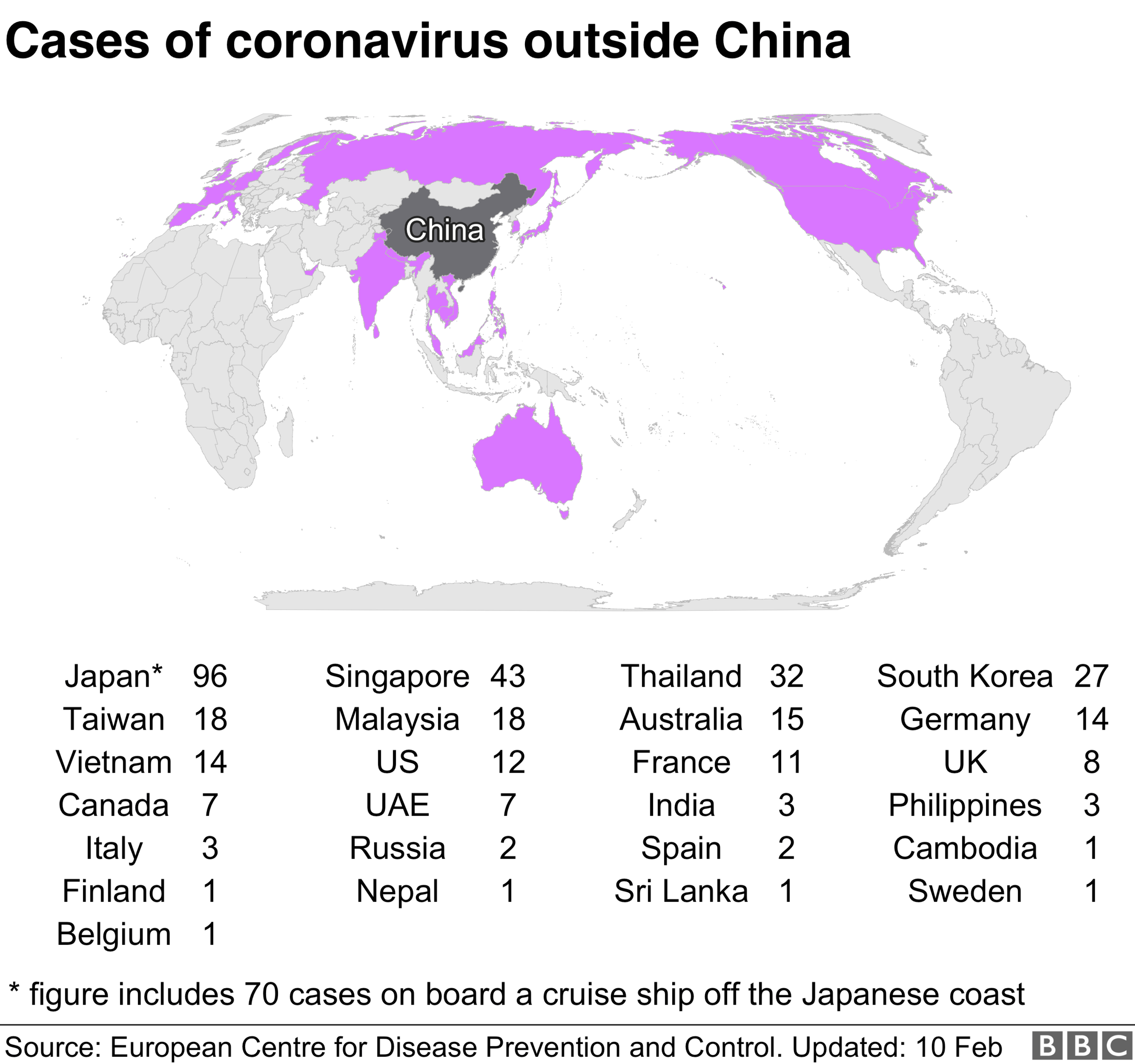

The new cases mean around a third of all coronavirus patients outside of China were on the Diamond Princess.
In the UK, the number of people infected doubled to eight after four more people tested positive for the virus on Monday.
The Department of Health has described the coronavirus as a "serious and imminent threat" to public health, authorising new powers in England to keep people in quarantine.
One of the eight people inflected in the UK is a British man who caught the virus at a conference in Singapore and travelled to a ski resort in France. He has been linked to five of the other cases.
The WHO chief has expressed serious concern about such cases of the virus transmitting between people who had not been in China.
"It could be the spark that becomes a bigger fire," Tedros Ghebreyesus said. "We call on all countries to use the window of opportunity we have to prevent a bigger fire."
Meanwhile, in Hong Kong, authorities have evacuated people from a residential building where two people confirmed infected lived on different floors.
The government says it is investigating suspected "environmental transmission". Anyone showing symptoms will be placed in quarantine.

Read more about the coronavirus and its impact
SHOULD WE WORRY?Our health correspondent explains
YOUR QUESTIONS:Can you get it more than once?
WHAT YOU CAN DO:Do masks really help?
UNDERSTANDING THE SPREAD:A visual guide to the outbreak
LIFE UNDER LOCKDOWN:A Wuhan diary
ECONOMIC IMPACT:Why much of 'the world's factory' remains closed
- Published6 October 2021
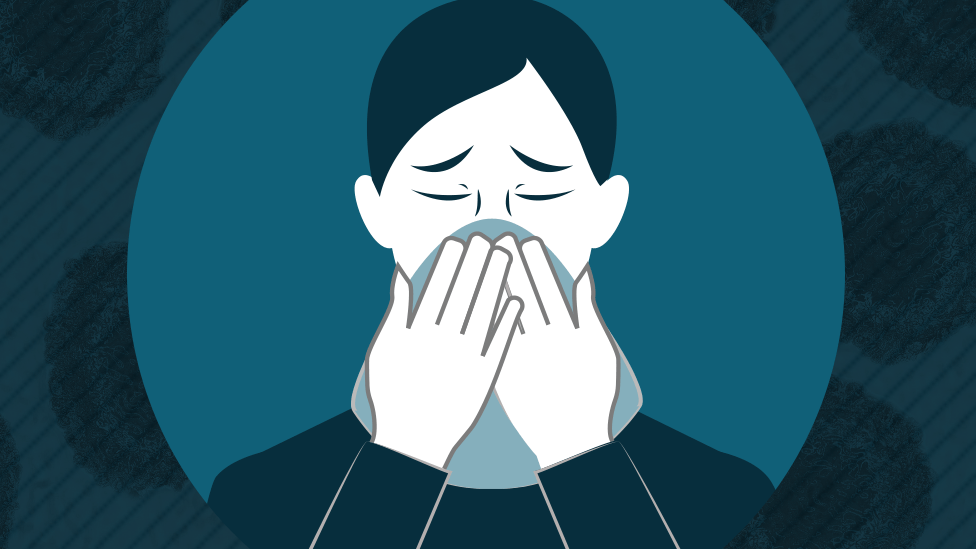
- Published10 February 2020
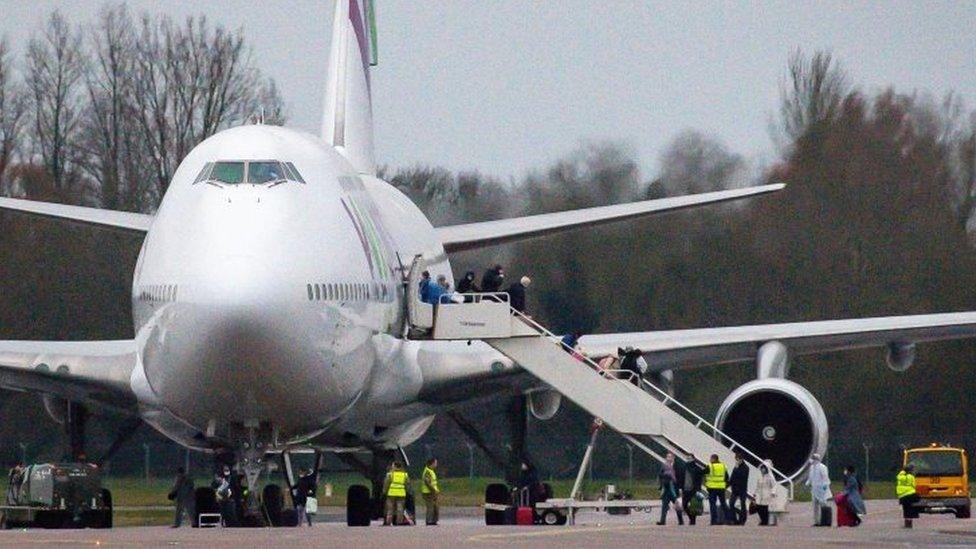
- Published10 February 2020
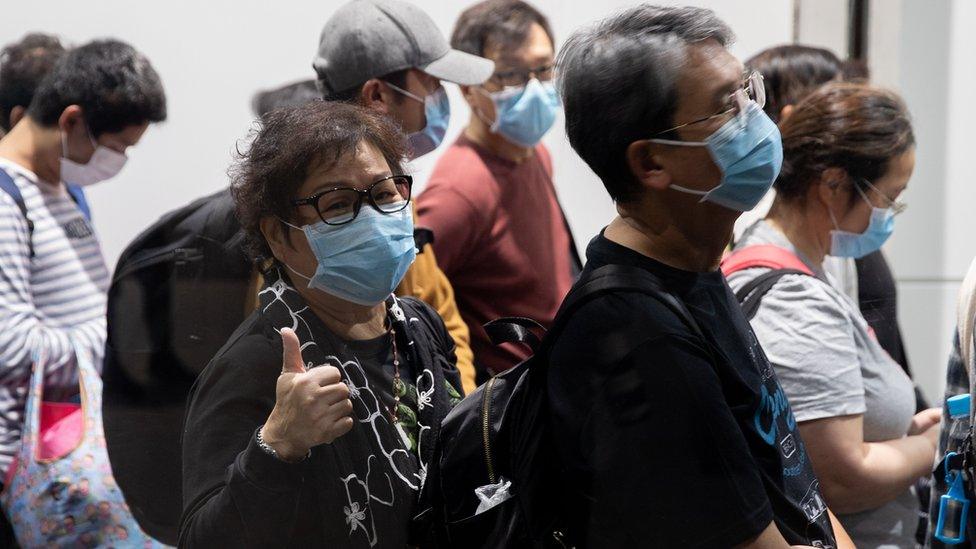
- Published22 February 2022
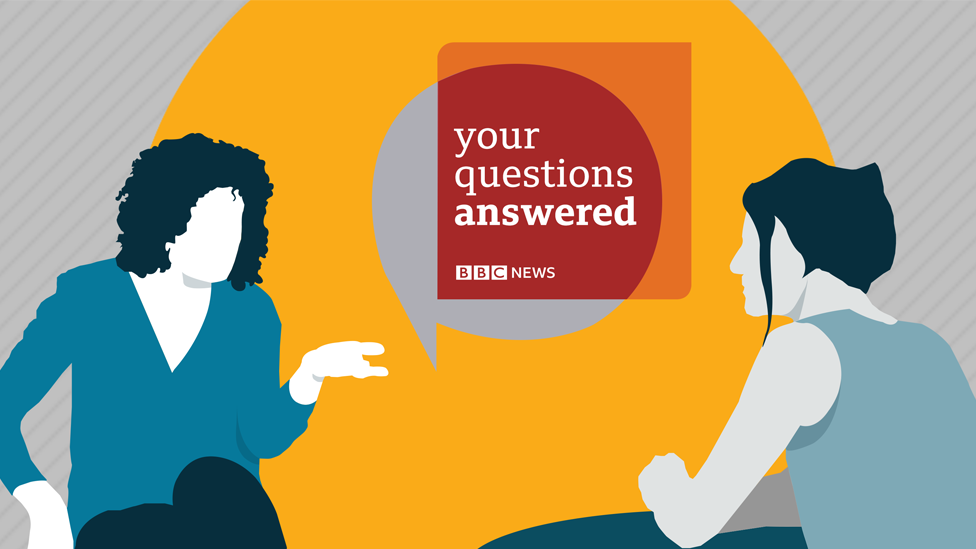
- Published7 February 2020
